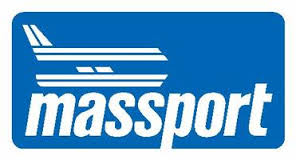
Hordes are expected to take to northbound highways on Monday, headed for the “zone of totality,” the optimum location to experience the afternoon’s eclipse of the sun.
Alan M. MacRobert will not be among them.
Actually, MacRobert, Bedford’s best-known astronomer, and his wife Abby Hafer plan to travel to northeastern Vermont on Sunday when the traffic will be lighter.
But the Davis Road resident said that people who choose to remain close to home can still witness the rare cosmic event. Locally, he said, there will be a “deep partial eclipse.”
The Google map that is set up to show the eclipse context of any site says the sun will be 93 percent covered by the moon in Bedford, MacRobert said. During the few minutes of the actual eclipse, one-20th of the sun’s surface will be uncovered, “a very thin, dazzling, brilliant crescent. That’s deep enough so you will definitely notice the sky becoming uncannily deep blue. Venus and Jupiter should become visible in what normally would be broad daylight.”
He said there will be “a really eerie light to the landscape, kind of silvery. Shadows are weird and sharpened. It will definitely be a dramatic and striking phenomenon.”
MacRobert joined the editorial staff of Sky and Telescope in 1982, and after stepping down from a full-time role three years ago he now describes himself as a semi-retired senior editor of the magazine. He also wrote an astronomy column for The Boston Globe for many years.
According to Sky and Telescope, “He has played a role in practically every part of the magazine and its products for a generation and a half, both on the amateur-observing side and the science-reporting side.”
MacRobert repeated the standard pre-eclipse warning: “Never stare at the surface of the sun. You can burn out your retina – which may or may not heal.”
There are safe solar filters built into special viewing glasses available commercially. “All the ones on the market are safe,” MacRobert said, noting that they have to block infrared and ultraviolet light.
The duration of the actual eclipse is less than a Super Bowl commercial break.
“At the center line, the total is three-and-a-half minutes,” MacRobert said.
But the experiential window is two hours. In Bedford, MacRobert said, the moon begins impeding the sun at 2:16 p.m. with maximum coverage at 3:29. Then it will recede until the situation returns to normal at 4:16 p.m.
MacRobert said a piece he wrote in the most recent Sky and Telescope may be helpful. It’s called “The Solar Eclipse for the Rest of Us – What to Watch For.” Here are some excerpts:
- “As the moon leisurely intrudes farther onto the sun, look for irregularities showing up on the edge of the moon’s silhouette. These are lunar mountains and valleys seen in profile along the moon’s limb. The sun’s own edge, by contrast, is perfectly smooth.”
- “As the eclipse progresses, look around at the landscape and blue sky. Is the blue becoming deeper and purer? You may be surprised by how much sunlight has to be lost before the world looks any different. This is a measure of how well our eyes naturally adapt to changing lighting conditions. If the partial eclipse at your site is deep and the sun becomes a thin crescent, watch for the landscape to take on a slightly alien, silvery look, with shadows turning crisper than usual.”
- “Venus and Jupiter will become visible if the sky turns a deep enough blue. Venus is your first try. Look for it 15 degrees to the sun’s celestial west-southwest. Next brightest is Jupiter, twice as far on the sun’s opposite side.”
- “Look for dim dapples of sunlight on the ground under trees. A leaf canopy can form many pinhole projectors, and during a partial eclipse each dapple on the ground will show an identical dent. Or make little holes between the fingers of your two hands laid across each other.”
MacRobert said this will be his fourth solar eclipse, but his first when not on assignment for the magazine, sometimes aboard cruise ships chartered for this purpose. He witnessed one eclipse in Aruba, another on the western coast of Mexico, and a third in Casper, WY, which he said experienced “its biggest traffic jam in history – and possible the only one.”
He added an “interesting astronomical coincidence:” the apparent shape of the moon and the sun are very similar. However, the moon is 400 times closer to earth – and the sun is 400 times larger.





























Thanks for the solar eclipse story quoting me! One caveat: We can’t give a blanket statement that all eclipse glasses on the market are safe. That was true of all the many that Sky & Telescope magazine tested for the last US total eclipse in 2017. The American Astronomical Society (the nonprofit association of US professional astronomers) now has a long list of good eclipse glasses that passed its own current tests.
Until very recently it had never found a bad one. But a couple weeks ago it put out a press release about Chinese counterfeits wrongly bearing the names of Cangnan County Qiwei Craft Co. and/or Solar Eclipse International, Canada (SEIC), which are legitimate companies.
Luckily those fakes are obvious. They are no darker than ordinary sunglasses you can see through! Real eclipse glasses are thousands of times darker and look totally black for essentially anything but the Sun.